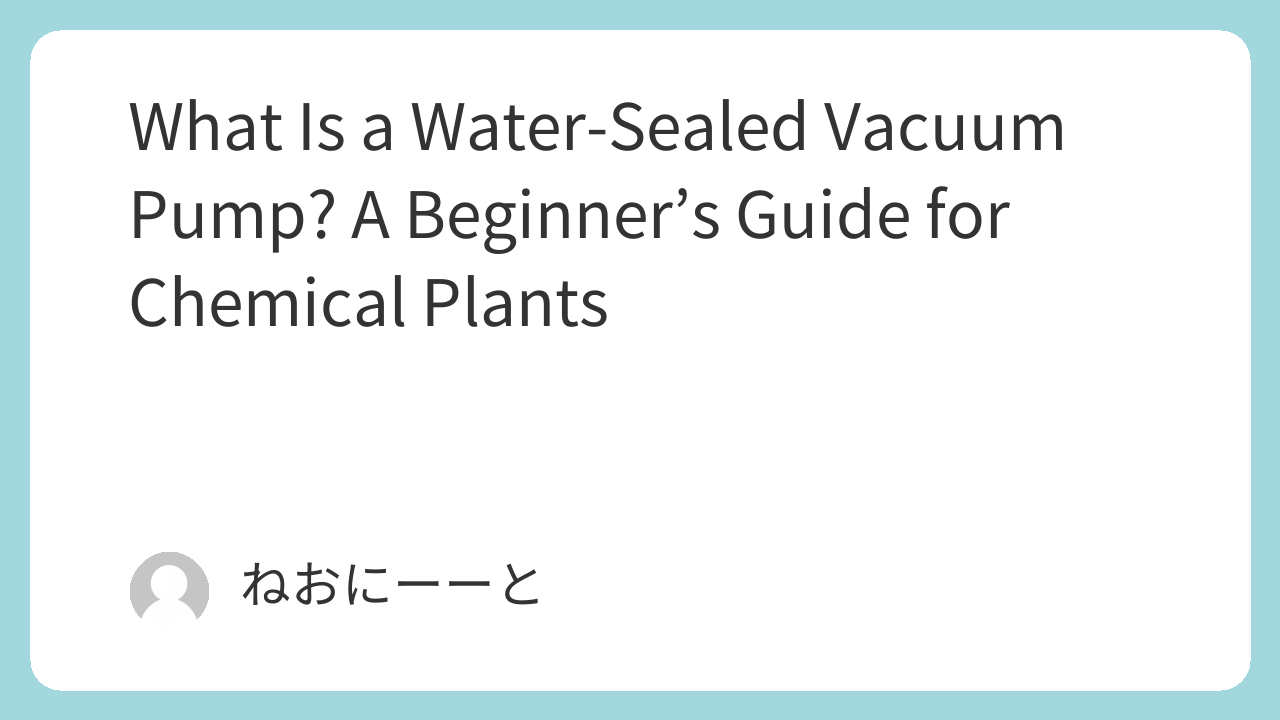Vacuum pumps can sound complex and highly technical. However, in chemical plants, water-sealed vacuum pumps are widely used to create vacuum safely and reliably. This article explains how they work, their advantages, and things to watch out for, in a simple and beginner-friendly way.
How It Works
A vacuum pump removes gas using mechanical power. The higher the vacuum you try to achieve, the more you have to fight against the natural flow from the atmosphere.
Water-sealed vacuum pumps use water to prevent backflow, while oil-sealed pumps use oil. The pump’s suction side experiences high vacuum, while the discharge side is at or slightly above atmospheric pressure. This creates large volume changes in the gas, which water sealing handles safely.
Typical Flow
A water-sealed vacuum pump system includes:
- The vacuum pump itself
- Pipes connecting the pump to the target equipment
- A tank to separate water and gas from the pump discharge
- Circulation of the sealing water, often cooled by a heat exchanger
Safety Advantages
Water-sealed pumps are very safe, especially in chemical plants with organic solvents:
- Small gaps or oil in mechanical pumps can cause heat buildup and risk fire/explosion
- Water in water-sealed pumps acts as a cooling medium, reducing hazards
Post-Treatment
Water-sealed pumps are easy to handle afterward, as contaminated water can often be treated with the plant’s wastewater system. Oil-sealed pumps require handling of contaminated oil, which is more complicated.
Achievable Vacuum Pressure
| Pump Type | Reachable Pressure |
|---|---|
| Reciprocating | 1–7 kPa |
| Single-stage Roots | 40 kPa |
| Two-stage Roots | 7–13 kPa |
| Water-sealed | 7–20 kPa |
| Vane | 7–10 kPa |
| Centrifugal | 30–80 kPa |
| Ejector | 7–10 kPa |
| Oil Rotary | 0.001 kPa |
| Mechanical Booster | 0.001–1 kPa |
Water-sealed pumps can reach relatively high vacuum in non-extreme vacuum ranges.
Disadvantages
- Cooling Water Management: Water temperature affects achievable vacuum. Continuous replacement or circulation is needed.
- Limited Corrosion-Resistant Materials: High-corrosion materials are less common.
- Potential for Clogging: Powder or solid particles can block the pump or circulation lines.
Capacity and Flexibility
Water-sealed pumps allow easy capacity upgrades, e.g., by adding a steam ejector or mechanical booster.
Conclusion
Water-sealed vacuum pumps are simple, reliable, and environmentally friendly vacuum sources for chemical plants. They are safe and easy to understand for beginners. When selecting a pump, consider not only advantages but also plant-specific operating conditions.

Comments